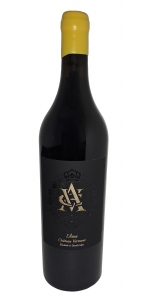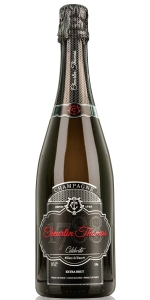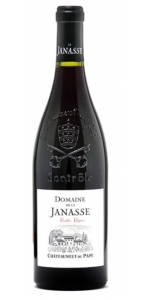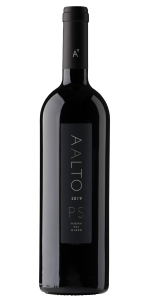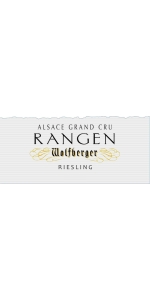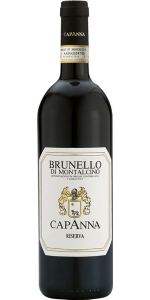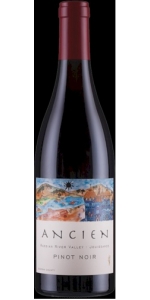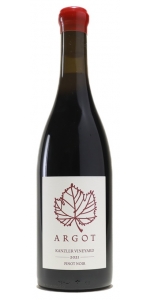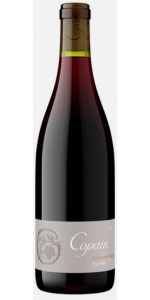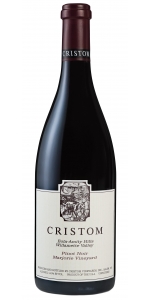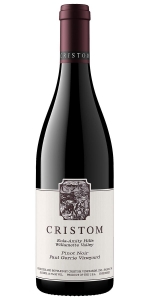Bergstrom Silice Pinot Noir 2021
6 bottles with free shipping for: $600.00
12 bottles with free shipping for: $1,140.00
| BUY MORE! SAVE MORE! | ||||||||||||||||||||
|
| Country: | United States |
| Regions: | Oregon Oregon (Chehalem Mountains Oregon) |
| Winery: | Bergstrom |
| Grape Type: | Pinot Noir |
| Organic: | Yes |
| Vintage: | 2021 |
| Bottle Size: | 750 ml |
#32 Wine Spectator Top 100 of 2023
Delicate red in color. The incredibly expressive bouquet offers notes of sandalwood, herbs de Provence, and Red Delicious apples. On the palate, freshly picked red huckleberries provide tart and lasting succulence with a hint of baking spice. The sandy soils of the Chehalem Mountains offer salinity and minerality on the finish that is complemented with dark cherry and rhubarb.
Review:
Supple, richly textured and elegantly complex, this Pinot opens with a burst of fresh raspberry, then unfolds with notes of forest floor and brown baking spices, plus a touch of licorice as it builds tension toward refined tannins.
-Wine Spectator 95 Points
The first impression of this stunning red is of brilliant red raspberry fruit, as pure as a sunbeam. Yet an inky depth plays counterpoint, rumbling beneath, dark and a bit spicy, grounding the fruit with tannins from the silica-based soils of Bergström’s estate vineyard in the Chehalem Mountains. The tension between these two elements is gorgeous, the fruit saturating and full, and yet it has an energy and drive giving the texture a lifted, graceful feel.
-Wine & Spirits 95 Points
Bergström Wines is more than a winery; it is a testament to the enduring dreams and hard work of the Bergström family. At the helm of this legacy are Josh and Caroline Bergström, the driving force behind our business.
Our family business finds its roots in the remarkable journey of Josh’s father, John Bergström, who left his Swedish homeland as a young teenager to pursue the American dream.
Chateau Vermont L'Ame Grand Vin de Bordeaux is made from 40% Merlot, 30% Cabernet Franc and 30% Petit Verdot.
L'AME de Vermont represents the culmination of 10 years of dedicated work, derived from select grapes of Chateau Vermont's best parcels, chiseled to be the ultimate extraction of their terroir and Spirit. This cuvée is the Winemaker's soul. It is a reflection of the requirements, precise work and desire to achieve perfection.
A rare and confidential wine, vinified and matured in new oak barrels. Fine wine, elegant and well-balanced, with vanilla notes coming from the oak aging and subtle scents of ripe black and red fruits. A beautiful structure and great aging potential.
Cheurlin Thomas 'Celebrite' Blanc de Blancs Extra Brut
An elegant soft gold color with a refined ring of bubbles. The nose reveals fruity aromas of a complex wine. The mouth is fresh and balanced with a woody finish. A great character with a perfect balance.
Cuvee harvested on the south facing land. The limestone base of the seat is emphasized by a thin bed of Kimmeridgian marl leaving a grayish underground, earth colored by white marl, ground vineyards par excellence. The wine is matured in oak barrel and pipe, second fermentation in the bottle with a minimum of 18 months aging. Reflects the white varieties of the Barrois hillsides.
Cheurlin Thomas Célébrité has rewritten the definition of excellence in Blanc de Blanc Champagnes. As authentic a champagne as can be crafted, the exceptional taste of this Grower’s prestige cuvée is re-writing wine books the world over. An exclusive champagne, produced in limited quantities, Cheurlin Thomas Célébrité is made solely from white grapes varieties and zero added sugar. Célébrité is all natural juice.
Domaine de la Janasse Chateauneuf-du-Pape Cuvee Vieilles Vignes is made from 65% Grenache, 20% Mourvèdre, 10% Syrah, 5% divers.
In contrast to Chaupin, which is made from old-vine Grenache on sandy soils, the cuvée Vieilles Vignes is from old vines of Grenache, Mourvedre, Syrah along with smaller percentages of other permitted varieties that are grown in these old vineyards. The wine is sourced from 4 terroirs: pebbly clay, sand, gravelly red clay and sandy limestone. Vieilles Vignes is always the most powerful and concentrated Châteauneuf-du-Pape cuvée made at Domaine de la Janasse.
Review:
The advantages of old vines are perhaps most evident in the more difficult vintages (whether hot and dry or cool and rainy). The 2021 Chateauneuf du Pape Vieilles Vignes is a strong effort, delivering supple, velvety waves of ripe black cherries and black raspberries. Medium to full-bodied, it's rich and concentrated without seeming at all heavy or unbalanced, finishing long and juicy. It's approximately 75% Grenache, 15% Mourvèdre, 5% Syrah and 5% other varieties, keeping in mind that up to 15% of the old Grenache vines are actually Clairette Rose.
-Wine Advocate 96 Points
Aalto P.S. Pagos Seleccionados Tinto is made from 100 percent Tempranillo.
Climatic conditions
The farming year began with a mild autumn and little precipitation. A very dry winter started with -9ºC reaching at the end higher temperatures than normal for that time of the year. Spring and summer characterized by little rain, only some rain showers in July and late August avoided the hydric stress of the vines. The vegetative cycle of the vine developed with big variations of temperatures, alternating warm and atypical low temperatures of 4ºC for mid-June. The ripening of the grapes happened under very good conditions and the harvest started on 24th September 2019.
Grape origin
100% Tinto Fino (Tempranillo) primarily from very old vines – 60 to 90 years old – from selected plots in La Horra and La Aguilera. The harvest was done by hand, in small boxes of 15 kilos that are thoroughly inspected, bunch by bunch, on the selection table.
Tasting notes
Average oak ageing
Aged for 21 months in new French oak barrels.
Review:
Color: dark cherry, Aroma: toasty, spicy, fine cocoa, black fruit, Mouth: tasty, toasty, fine bitterness, ripe tannins
Guia Penin 94 Points
Wolfberger Alsace Grand Cru Riesling Rangen de Thann is made from 100 percent Riesling.
Mineral, spicy, minty with some eucalyptus notes, tropical fruits, grapefruit. Balanced and exotic in the finish, with long lasting flavors.
The Rangen Grand Cru is located in Thann, deep in the south of Alsace. Its particular soil is made of volcano-clastic rocks that drink up the heat of the day and send it back out again at night. The composition of the soil allows the roots of the vines to drink deeply from the mineral-rich sub-soil. Its southern exposure has the advantage of refreshing, drying winds in case of dampness. The high slopes are quite steep, reaching 68% in some places, requiring that the harvest be done by abseiling or roping down. Perfect for aging, these wines will reveal even more qualities after several years in the cellar.
Pair with Serve with fish, seafood, sushi, sashimi, goat cheese, vegetarian food.
Capanna Brunello di Montalcino Riserva 2015
TYPE: DOCG
BLEND: 100% Sangiovese carefully selected in the oldest vineyards and only of the best harvests.
VINIFICATION:
Alcoholic fermentation with maceration of the skins (30-35 days) at a controlled temperature and spontaneous malolactic fermentation, both in truncated cone-shaped Slavonian oak vats.
AGEING:
In Slavonian oak casks of 10 to 25 hl for over 40 months; followed by ageing in bottles for at least 15 months.
NOTES:
Colour: deep ruby red, strong, lively.
Bouquet: very intense and complex, fruity and spicy, with red fruit, jam and liquorice shades; great prospects of future development.
Taste: great structure in the acid-tannin components, well supported by the soft ones; extremely persistent.
Food pairings: roast red meats, game and very aged cheeses.
Review:
Powerful, sparkling garnet red. Rich, very appealing nose with notes of ripe raspberries and fresh plums, some liquorice and fine spice notes in the background. Grippy, fine-meshed tannin on the palate, builds up in many layers, salty, good tension, very long finish in the finish.
- Falstaff 98 Points
Ancien Pinot Noir Russian River Jouissance is made from 100 percent Pinot Noir.
Jouissance is sourced from the single vineyard established and farmed by Mark Lingenfelder at his home estate. Mark’s decades of experience as a vineyard manager and consulting viticulturalist have provided him the depth of experience to reach the pinnacle at his own property. Having worked with storied wineries over the years, we are grateful our paths have crossed enabling us to work with him for our Russian River designate. He tends the vines himself while relying on neighbor Lee Martinelli to provide additional help at the peak times. We work with a mix of Pommard and Dijon 667 vines from his oldest and youngest blocks – aged wisdom combines with youthful vigor!
The 2021 growing season was a welcome success after a more varied and challenging 2020. The vines came on with aplomb, demonstrating the rich fruit concentration we expect – even if the crop was meager. The ongoing drought in California served to further accentuate the character and concentration of the fruit. While warmer conditions have prevailed in other areas, the coastal areas of California continue to benefit from the maritime influence and moderating influence that it brings.
We fermented in our one ton, open-top tanks after filling by gravity. A warm fermentation with a combination of native and isolated Burgundian yeasts produced excellent and focused flavor extraction, complemented with traditional punch-downs by hand. The wine was aged entirely in Francois Freres cooperage, 40% new, and racked once, gently, prior to bottling. Grapes, must, and wines were moved using gravity through to the barrel and using inert gas through racking and bottling. 151 cases produced.
Bright fruit notes dominate the aromas with bright cherry, plum, and boysenberry underlaid by allspice and clove. On the palate the wine is liquid velvet, it’s silkiness segueing into a burst of fruit and spice that rides high on the palate while gradually opening to deeper berry, tea, and baking spices. It is a refreshing and lively Pinot Noir in its youth that will continue to fill out in depth and complexity over the next 2-5 years.
Argot Pinot Noir Kanzler Vineyard is made from 100 percent Kanzler.
Pinot Noir finds its nirvana tucked away in the Goldridge soils and rolling topography of the cool and foggy Sebastopol Hills. Kanzler is one of Sonoma’s undisputed Grand Cru sites. This terroir produces deeply fruited wines with dazzling spice-box complexities, wonderful acidity and undeniable focus and freshness. A masterclass in Pinot Noir.
Review:
The 2021 Pinot Noir Kanzler Vineyard is deep ruby-purple in color. It explodes with bombastic scents of juicy blackberries, black raspberries, and tar with nuances of cracked black pepper, espresso, and crushed rocks. The full-bodied palate is laden with black fruit preserves flavors and savory nuances, framed by fine-grained tannins and lovely freshness, finishing long and spicy.
-Wine Palate 95 Points
Copain Wines Pinot Noir Anderson Valley is made from 100 percent Pinot Noir.
Les Voisins, or "the neighbors" is sourced from some of the best vineyards in Anderson Valley to create a wine that displays the region's unique terroir. A myriad of fresh fruits beam from the glass including blueberry compote, kirsch, blackberry and red cherry. Underlying notes of graphite, conifer, fresh flowers, orange peel and wet sandstone add to its complexity. Bright and fresh, this Pinot Noir will take you on an adventure to one of California's most remote winemaking regions.
Review:
Taking on a touch of darker fruit, the 2021 Pinot Noir Anderson Valley brings forward aromas of black raspberry, red cherry, cinnamon, and candied flowers. Medium-bodied, with supple texture and a touch more plushness on the palate, it reveals ripe berries, fresh pine, and turned soil. Its ripe tannins come through on the finish cleanly, offering a lot of charm. Drink over the next 5-6 years.
-Jeb Dunnuck 93 Points
The Marjorie vineyard sits in the center of the Cristom Estate with a gentle slope from 480 feet to 600 feet over some of the most consistent volcanic soils on the entire Estate. A little bit unique to itself, most of the Vineyard is planted over a moderately deep volcanic soil with some very rocky areas in the north and southeast corners. The vineyard wants to produce elegant wines of finesse with bright red fruit and succulent acidity.
Review:
Dark ruby, the 2021 Pinot Noir Marjorie Vineyard takes on a darker mineral profile with forward aromas of wet stone, black raspberry preserve, and layers of baking spices and crushed purple flowers. Moving to the palate, the wine is medium-framed, with ripe tannins, an angular texture, fresh acidity, and a spicy finish. This certainly needs more time and will gain complexity with time in cellar.
-Jeb Dunnuck 95 Points
Darkly alluring, the 2021 Pinot Noir Marjorie Vineyard is perfumed with dusty violets and lavender, giving way to dried black cherries. Luxuriously round, with juicy acidity, this cascades across the palate with crisp raspberry fruits as rosy inner florals amass toward the close. Hints of blood orange pucker the cheeks as the 2021 finishes staining and long with long lingering chalky mineral tones.
-Vinous 95 Points
Aromatically the wine lifts from the glass with a combination of perfectly ripened red and black fruits, with a graphite smokiness and a hint of mulling spices. On the palate, their is a youthful tannic structure and a floral flavors alongside the fruity notes.
Spicy cologne lifts from the 2021 Pinot Noir Paul Gerrie Vineyard, with both high-toned and darker notes of sage, menthol, bergamot, and cranberry cocktail. Medium to full-bodied, it’s tightly coiled, with tremendous length, gripping ripe tannins, a bright spine of acidity, and mouthwatering salinity that lasts long on the finish. It offers up great mineral texture and will need 3-5 more years in bottle.
- Jeb Dunnuck 96 Points
This mountain grown wine shows expresses ripe fruits of the warm days and the acid balance from the cool nights. Vibrant fruit aromas of blueberry, raspberry, and plum are the hallmarks of the aromatics along with a subtle cedar/cigar box note. These aromatics lead into voluptuous flavors of berries and spice in this structured, yet lively Pinot Noir.
In the Anderson Valley of Mendocino County the local residents speak an obscure dialect of English known as Boontling, developed in the late 1800s. The “Muldune Trail” was a term used in Anderson Valley lore o¬en describing the road traversing the ridge to Ukiah. There are other definitions of hitting the “Muldune Trail” that we will leave to the drinker to discover!
Review:
Pouring a deep ruby, the 2021 Pinot Noir Muldune Trail is more extracted with kirsch, polished leather, lavender, and pine. Full-bodied, this is the most powerful wine in this lineup, while having a luxurious feel, a velvety texture, and plushness throughout. Offering notes of turned soil and wooded earth, with meaty berry fruit and black tea, it’s a substantial wine but is well-made. Drink 2025-2040.
-Jeb Dunnuck 94 Points
- back
Vintners Dennis O’Neil and Steph Martin began development of Checkerboard Vineyards in 1999 and retained winemaker Martha McClellan to create a portfolio of wines reflecting the mountainside. The estate includes four vineyard sites of different elevation, exposure and soil composition, providing the foundation for a portfolio that includes Checkerboard Aurora Vineyard, Checkerboard Coyote Ridge Vineyard, Checkerboard Nash Creek Vineyard, Checkerboard Kings Row, Checkerboard Sauvignon Blanc, and Checkerboard Rose. Grapes are harvested at dawn in micro-lots and delivered steps away to the winery where clusters are sorted, discarding any blemished ones. Individual berries are hand-selected for vinification and transferred for fermentation, by hand, to Taransaud wooden tanks, stainless tanks, and individual wooden barrels.
Farming is based on long-term sustainability and includes water conservation and monitoring, permanent cover crops planted in alternating rows, and the use of entomology for pest control and the development of soils with good organic matter and microbiology. Checkerboard Vineyards is a member of Fish Friendly Farming which promotes environmentally-friendly land practices and water quality management. Aurora Vineyard is located in a small valley midway up Diamond Mountain and on a large knoll at an elevation of 1,200 feet. The knoll bulges outward, giving the vineyard full Southern exposure and open light from the East and West and protection from Napa Valley’s summer fog. Six acres are planted in the knoll’s rich, volcanic soils that are riddled with basalt cobble in a loamy red clay. The remaining six acres are planted in a deep gravely mix of volcanic ash and chips of decomposed Rhyolite that were washed down from the steep, rocky crags of Diamond Mountain above.
There's a fresh, sweet aroma to the 2016 Checkerboard Aurora Vineyard that builds excitement and anticipation for what's to come. On approach, the palate is juicy and expansive and explodes with flavors of blackberry, mulberry, dark cherry, caramel, leaf tobacco and green olive. The wine continues with a voluptuousness that's linear and constant yet lifted by natural acidity. The finish is showy, long and lingering with finely polished tannins. An exceptional vintage.
Landes Cuvee Tradition Lussac Saint Emilion is made from 80% Merlot, 15% Cabernet Sauvignon and 5% Cabernet Franc
Color: deep ruby intense color.
Aroma: racy and aromatic nose with aromas of ripe red fruit.
Taste: this wine is silky, round and smooth first taste, with aromas of raspberries, and blackcurrant, powerful and complex finish.


